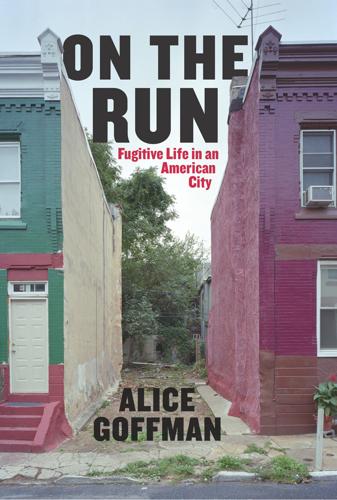
On the Run: Fugitive Life in an American City
by
Alice Goffman
Published 30 Apr 2014
And the woman is not only free from legal entanglements—she likely works in the formal economy or receives government assistance, whereas the man makes his sporadic income in the streets, doing things for which he could be arrested. There is also an age divide—overwhelmingly, it is young people who are mired in legal entanglements, not older people. And third, there is a class divide, for it is most typically unemployed young men without high school diplomas who are dipping and dodging the police, who have probation sentences to complete and court cases to attend. Dirty people are likely more aware of their status than clean people are of theirs, much in the same way that Black people may think about race more often than white people do, or gay people may think about sexual orientation more often than straight people do.
…
After all, some of them occasionally sold marijuana and crack cocaine to local customers, and sometimes they even got into violent gun battles. I grew to understand that many young men from 6th Street were at least intermittently earning money by selling drugs, and the criminal justice entanglements of Chuck and his friends were on a par with what many other unemployed young men in the neighborhood were experiencing. By the time Chuck entered his senior year of high school in 2002, young women outnumbered young men in his classes by more than 2:1. Going through his freshman yearbook years later, when he turned twenty-two, he identified roughly half the boys in his ninth-grade class as currently sitting in jails or prisons.3 ON BEING WANTED In 2007 Chuck and I went door to door and conducted a household survey of the 6th Street neighborhood.
…
By her own account, Miss Linda’s father had spoiled her hopelessly as a child, especially after her mother left. She came of age at the height of the crack boom and dropped out of high school during her junior year. The men she dated worked at the bottom of the crack business, which at the time offered decent wages and even the promise of wealth to unemployed young men growing up around 6th Street. Many of her boyfriends also shared her addiction. During a decade of hard living, Linda gave birth to three sons: Chuck in 1984, Reggie in 1987, and Tim in 1991. By this time, the ghetto Mr. George had worked so hard to escape seemed to have grown up around them.

The Bad-Ass Librarians of Timbuktu: And Their Race to Save the World's Most Precious Manuscripts
by
Joshua Hammer
Published 18 Apr 2016
Salafis from Saudi Arabia—fundamentalist Muslims who extol a return to the Islam practiced by the Prophet and his original followers, the Salaf, or ancestors—had constructed Wahhabi mosques both in Timbuktu and other desert communities, founded orphanages, and lavished cash on local charities. “The north is huge and impoverished, with lots of unemployed and angry young men,” the American diplomat in Bamako had told me. “The potential for the exploitation of disenfranchised youth definitely exists.” The imam of the new Wahhabi mosque in Timbuktu, a member of the local Sorhai tribe, had succeeded in attracting two dozen residents of Timbuktu to Friday prayers, my driver, Baba, told me, including some young men who had proudly displayed Osama bin Laden T-shirts after the attacks of September 11.
…
Then they touched down on Timbuktu’s tarmac airstrip, to an official greeting from the mayor and many civil servants attired in turbans and flowing traditional Malian gowns. Timbuktu was beginning a tourist boom, but Wald couldn’t help noticing how backward the place was: unpaved streets, tumbledown mud-brick houses, and, it seemed, many unemployed young men. He toured the Ahmed Baba Institute, the government library funded by UNESCO that, thanks to Abdel Kader Haidara, now contained one of the world’s largest collections of medieval Arabic manuscripts. Then Wald visited Timbuktu’s Djingareyber Mosque, a mud-walled trapezoid with two limestone minarets, designed and built by one of the medieval world’s great architects, Abu Es Haq Al Zaheli, in 1327 on a commission from Musa I, known as Mansa Musa, the emperor of Mali.
…
He had money—at least 400,000 euros provided by Abou Zeid’s Tarek Ibn Ziyad Brigade of AQIM—and influence as the leader of the 1990 Tuareg rebellion, and his Islamic fervor struck a chord with several hundred members of his clan. In the following weeks Ghali created a new militia, including disaffected Tuareg members of the Malian military, restless former freedom fighters who had never adjusted to peace, and unemployed young men in Kidal. This force would be marching under the black banner of jihad. Ghali named his army “Ansar Dine,” or Defenders of the Faith, and he called for the implementation of Shariah law in the territory that it controlled. In November 2011, Ghali and the two commanders of Al Qaeda in the Islamic Maghreb in Mali, Mokhtar Belmokhtar and Abdelhamid Abou Zeid, sat down to parley in the Zakak riverbed.

I Shall Not Hate
by
Izzeldin Abuelaish
Published 15 Jan 2010
At first glance you might think everyone is in a hurry—heads down, no eye contact as people move from place to place—but these are the gestures of angry people who have been coerced, neglected, oppressed. Thick, unrelenting oppression touches every single aspect of life in Gaza, from the graffiti on the walls of the cities and towns to the unsmiling elderly, the unemployed young men crowding the streets and the children—that December day, my own—seeking relief in play at the beach. This is my Gaza: Israeli gunships on the horizon, helicopters overhead, the airless smugglers’ tunnels into Egypt, UN relief trucks on the roadways, smashed buildings and corroding infrastructure.
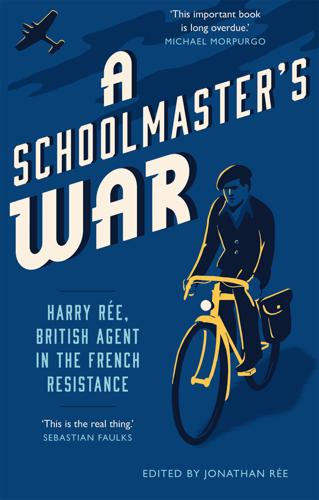
A Schoolmaster's War
by
Jonathan Ree
Schwimmer, Marcel (1913–1944): saboteur from Belfort, arrested at Café Grangier, 27 January 1944 and executed by firing squad in Besançon, 26 February. Simon, Jean (‘Claude’, 1921–1944): worked in a bank at Saint-Claude after leaving school, but by 1939 he was presiding over a Christian organisation (Jeunesse ouvrière chrétienne) that worked with unemployed young men in the Jura; in 1941 he turned against Pétain and the Vichy regime, and by 1942 was working with Pierre Larceneux in Lons; early in 1943 he received an order from the STO to go and work in Finland, to which he responded by going underground and helping Robert Paris to protect a maquis at Montmalin near Vadans, where he was recruited by HR, becoming his guide to the region, and one of his closest comrades, later following him to Montbéliard; after the arrest of Starr on 16 July he transferred John Young and Diana Rowden from Saint-Amour to Clairvaux-les-Lacs; he organised parachute drops and sabotages for HR, as well as the execution of Pierre Martin, and was murdered at the Café Grangier, Sochaux, Montbéliard, 27 January 1944.
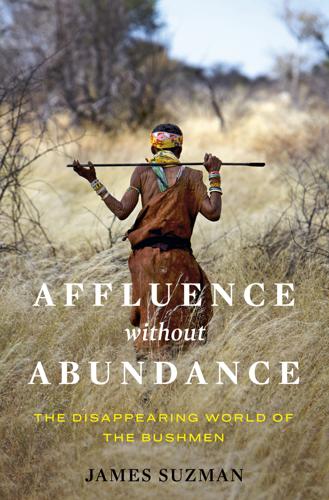
Affluence Without Abundance: The Disappearing World of the Bushmen
by
James Suzman
Published 10 Jul 2017
Pitted against them are the Skoonmakers (the “Cleaners”), a mainly Damara-speaking gang that has a reputation for hassling the more isolated households of the Herero section. And then there is the Herero section gang, the Skoffels (the “Shufflers”). They happily harass everyone. Most of the gangsters in Epako, though, are more feathers than claws. But occasionally things turn nasty. Groups of unemployed young men with knives, alcohol, and the searing November heat do not always mix well. The Skoonmakers are the most feared of the township gangs these days. Last time I was there, there was gossip about how they had castrated a G-Force boy before throwing his mangled testicles to the township dogs. All the gangs pick on Ju/’hoansi.
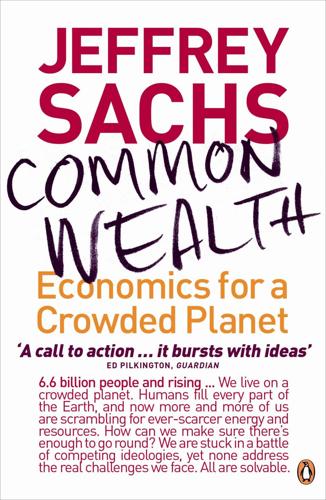
Common Wealth: Economics for a Crowded Planet
by
Jeffrey Sachs
Published 1 Jan 2008
The evidence, summarized in powerful reports by Population Action International (PAI) and by the demographer Henrik Urdal, is that a youth bulge significantly raises the likelihood of civil conflict, presumably by raising the ratio of those who would engage in violence relative to those who would mediate disputes. Most directly, unemployed young men become prime fodder for militias, raiding parties, terrorist groups, and armies. In PAI’s analysis, three kinds of demographic stressors are related to the likelihood of civil conflict: the youth bulge, the shortage of arable land per capita, and the rapid growth of urban areas. All, of course, are related to the persistence of high total fertility rates.
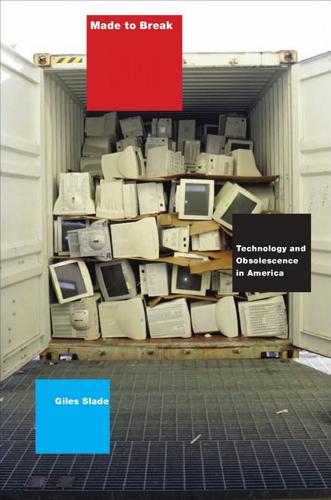
Made to Break: Technology and Obsolescence in America
by
Giles Slade
Published 14 Apr 2006
World War II improved the situation greatly, as 16 million young service men and women shipped out to the European and Pacifi theaters. But this improvement was only temporary. After demobilization, the situation worsened again. In Chicago in 1946, for example, the housing crisis was so bad that over 100,000 veterans—mostly unemployed young men—were homeless.24 In their book Picture Windows: How the Suburbs Happened, Rosalyn Baxandall and Elizabeth Ewen eloquently illustrate just how acute the housing crisis had become:“In Atlanta,2,000 people answered an advertisement for one vacancy. A classifie ad in Omaha newspaper read, ‘Big Ice Box 7 by 17 feet.
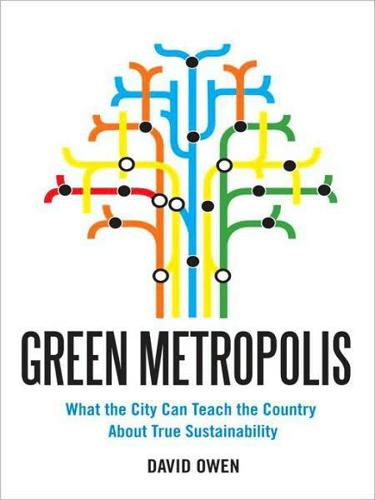
Green Metropolis: Why Living Smaller, Living Closer, and Driving Less Are Thekeys to Sustainability
by
David Owen
Published 16 Sep 2009
As Richard Louv and I and millions of other American children of our generation discovered in our youth, pulling up the survey stakes next door doesn’t work. On a radio program I heard in 2008, an environmentalist who was being interviewed advocated the reactivation of the Civilian Conservation Corps, an extremely popular Depression-era federal relief program that put unemployed young men to work on a broad variety of conservation-related maintenance and construction projects all over the country, primarily in state and national parks. The program ended officially in 1942, but it lives on through dozens of similar state and federal programs, most of which also employ young people and many of which descended directly from the original.

The Future Is Analog: How to Create a More Human World
by
David Sax
Published 15 Jan 2022
Essam’s office a few months later, John was a changed man. He looked Dr. Essam in the eye, engaged in conversation with her, and allowed her to examine him. She modified his prescriptions, leading to a dramatic improvement in John’s health. Since then, Dr. Essam had helped countless patients through social prescribing—unemployed young men and traumatized Afghanistan army veterans, isolated refugee women, abandoned seniors, and stubborn retirees—and she increasingly saw that the key ingredient in all of their individual transformations was conversation. Dr. Essam said, Those iterative conversations enable people to find their own sense of motivation and resilience and problem solving and opportunity and vision.

Dancing in the Glory of Monsters: The Collapse of the Congo and the Great War of Africa
by
Jason Stearns
Published 29 Mar 2011
On April 6, 1994, Rwandan president Juvénal Habyarimana’s plane was shot down just before landing in the capital Kigali, ending the fragile cease-fire that had halted the civil war.1 Preying on the population’s fear of the Tutsi insurgents, Hutu extremists in the Rwandan government deployed killing squads and popular militias, who rallied others, saying they must kill or be killed. The two largest and most notorious of these youth militias were the Interahamwe and the Impuzamugambi, ragtag bands made up mostly of unemployed young men, which were affiliated with two radical Hutu political parties. They drew up hit lists and manned roadblocks, checking identity cards for ethnic identity or just looking for stereotypical Tutsi features: a slender frame, high cheekbones, an aquiline nose. It mattered little that the Hutu and Tutsi identities themselves were historically as much class-based as morphological and that a rich, cattle-owning Hutu could be promoted to become a Tutsi.
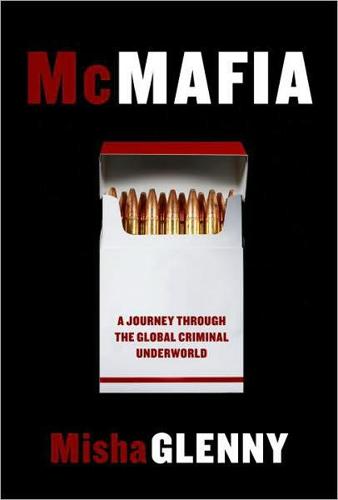
McMafia: A Journey Through the Global Criminal Underworld
by
Misha Glenny
Published 7 Apr 2008
During the 1990s, Spasojevic had established a monopoly on the heroin trade in Belgrade so that according to the local police, “he was processing about 100 kilograms of hard drugs monthly—this was bringing him in tens of millions of dollars.” The chaos in Serbia at the turn of the millennium was mirrored by instability elsewhere in the former Yugoslavia. With a decade of brutal wars coming to an end, the region was now full of testosterone-fueled, unemployed young men, who were often well armed. The conflicts had also created hundreds of thousands of refugees, a majority of whom went to Western Europe, establishing efficient distribution networks for the illicit goods transiting the Balkans. Naturally, cigarettes were not the only commodity traded across the Balkans and into the European Union.
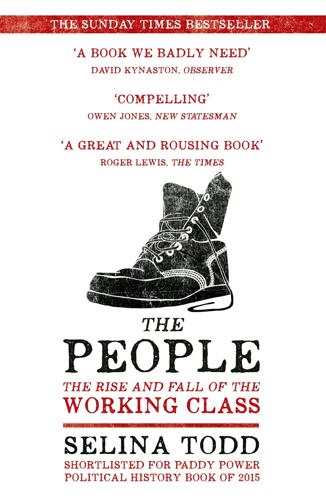
The People: The Rise and Fall of the Working Class, 1910-2010
by
Selina Todd
Published 9 Apr 2014
Alf’s seven brothers and sisters relied heavily on his wage, and in 1926 ‘if you had a job you was doing well’. With so many people desperate for work in Bristol, Alf and his colleagues ‘had to be careful in all ways; you could be victimized if they didn’t like the colour of your eyes.’18 In several cities, unemployed young men were among those who volunteered, primarily in order to earn a few shillings, though some of them also expressed a conservative patriotic fervour. In Glasgow strikebreakers included members of the Billy Boys, a violent Protestant street gang who provided protection for local Conservative Party meetings throughout the 1920s and 1930s.19 But most of the volunteers came from far more privileged backgrounds.
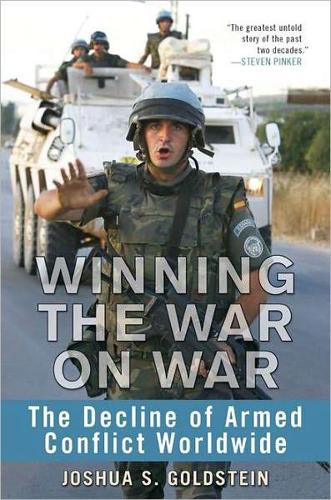
Winning the War on War: The Decline of Armed Conflict Worldwide
by
Joshua S. Goldstein
Published 15 Sep 2011
Another gendered aspect of conflict prevention is the potential for women to see conflict coming, if only the relevant officials or peacekeepers would ask them. In Sierra Leone, “women watched as arms were shipped in overnight along the river,” and wanted to warn peacekeepers but had no access to them. Conversely, the emergence of more violent concepts of masculinity may predict war, as when unemployed young men in Serbia “were readily recruited by hypernationalists into ‘soccer teams’ and indoctrinated with ethnic hatred,” later morphing into the “militias and armed gangs that terrorized the region as the war spread.” After a war, women have until recently found themselves sidelined in disarmament programs, because combatants were assumed to be men.
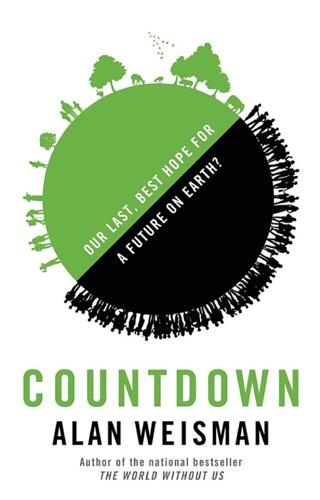
Countdown: Our Last, Best Hope for a Future on Earth?
by
Alan Weisman
Published 23 Sep 2013
Today, 60 percent of those Pakistani millions are under thirty. The wells and rivers that watered the Green Revolution and gave them life are now giving out, leaving one-third of Pakistani children chronically malnourished. Unemployment, in double digits, grows along with the population, and the percentage of those underemployed is even higher. Unemployed young men grow frustrated, and angry. A nation filled with angry young males is not a stable place, especially when they are tempted with paid opportunities to commit mayhem, including international mayhem. A shaky nation with too many people running out of water and driven to mayhem becomes an entire planet’s concern.
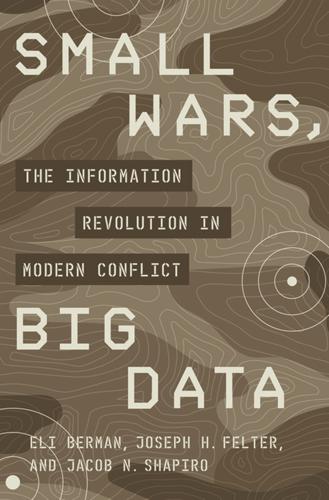
Small Wars, Big Data: The Information Revolution in Modern Conflict
by
Eli Berman
,
Joseph H. Felter
,
Jacob N. Shapiro
and
Vestal Mcintyre
Published 12 May 2018
The argument for employment reducing violence is often shored up by the common observation that higher-income countries (and even regions within countries) tend to have less insurgent violence. It also draws support from broadly accepted theories linking unemployment and poverty to recruitment and support of rebellions. Following that line of reasoning, gainful employment and a route out of poverty should reduce violence—because poor, unemployed, disaffected young men make up the recruiting pool for insurgencies. If these men were given jobs, a shot at prosperity, and a place in society, the rebellion would weaken. President George W. Bush articulated this position in 2005, referring to Iraq: “Unemployment is high, which fuels popular dissatisfaction and may generate sympathy for the insurgency … [and] makes some Iraqis more vulnerable to terrorist or insurgent recruiting.”10 President Barack Obama echoed this sentiment ten years later, in broader terms: “There are millions, billions of people who are poor and are law-abiding and peaceful and tolerant.… But when people—especially young people—feel entirely trapped in impoverished communities … that feeds instability and disorder, and makes those communities ripe for extremist recruitment.”11 In this chapter we will examine the literature that informs such thinking, reviewing the evidence base: a wide variety of studies on economic conditions and insurgent violence.
…
That sense of relative deprivation then leads to frustration, which, through a well-documented psychological mechanism, makes people more aggressive and thus easier to motivate to fight. Gurr therefore concludes that “the potential for collective violence varies strongly with the intensity and scope of relative deprivation among members of a collectivity.”15 The idea that relative deprivation stokes insurgency is widely accepted; we imagine that unemployed people—mainly young men—become so frustrated with their actual (versus their ideal) capabilities that they turn against the state. Grievances are often cited in the literature as drivers of insurgency. Relative deprivation is one type of grievance, but for clarity in this chapter, we’ll use the term “relative deprivation.”

Collapse
by
Jared Diamond
Published 25 Apr 2011
Hence the best predictors of modern "state failures"—i.e., revolutions, violent regime change, collapse of authority, and genocide—prove to be measures of environmental and population pressure, such as high infant mortality, rapid population growth, a high percentage of the population in their late teens and 20s, and hordes of unemployed young men without job prospects and ripe for recruitment into militias. Those pressures create conflicts over shortages of land (as in Rwanda), water, forests, fish, oil, and minerals. They create not only chronic internal conflict, but also emigration of political and economic refugees, and wars between countries arising when authoritarian regimes attack neighboring nations in order to divert popular attention from internal stresses.
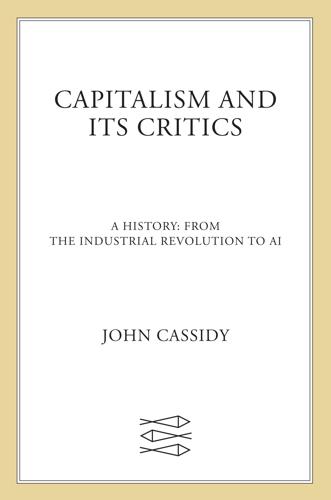
Capitalism and Its Critics: A History: From the Industrial Revolution to AI
by
John Cassidy
Published 12 May 2025
On March 9, 1933, Congress passed an Emergency Banking Act that effectively introduced a system of federal deposit insurance, which ensured depositors couldn’t lose their money. This measure restored public confidence in the banking system and put an end to the runs that had plagued the Hoover administration. Later in March, Roosevelt announced the creation of a Civilian Conservation Corps, which would provide work relief programs for unemployed young men across the country. And in April, he issued an executive order suspending US participation in the gold standard—a decision that Keynes hailed as “Magnificently Right.”30 Although Keynes admired FDR’s activism, his links to and influence on the Roosevelt administration were somewhat tenuous.
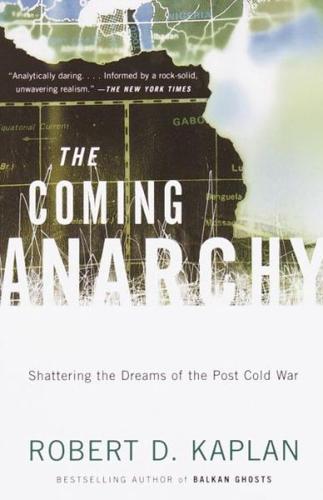
The Coming Anarchy: Shattering the Dreams of the Post Cold War
by
Robert D. Kaplan
Published 1 Jan 1994
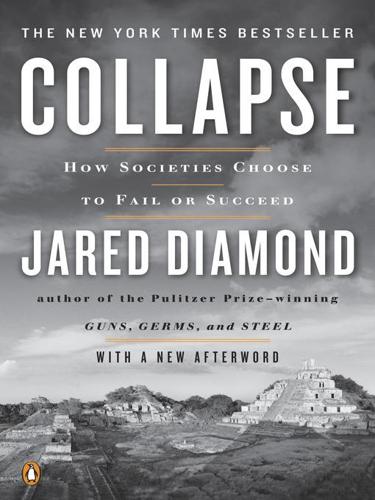
Collapse: How Societies Choose to Fail or Succeed
by
Jared Diamond
Published 2 Jan 2008
Hence the best predictors of modern “state failures”—i.e., revolutions, violent regime change, collapse of authority, and genocide—prove to be measures of environmental and population pressure, such as high infant mortality, rapid population growth, a high percentage of the population in their late teens and 20s, and hordes of unemployed young men without job prospects and ripe for recruitment into militias. Those pressures create conflicts over shortages of land (as in Rwanda), water, forests, fish, oil, and minerals. They create not only chronic internal conflict, but also emigration of political and economic refugees, and wars between countries arising when authoritarian regimes attack neighboring nations in order to divert popular attention from internal stresses.
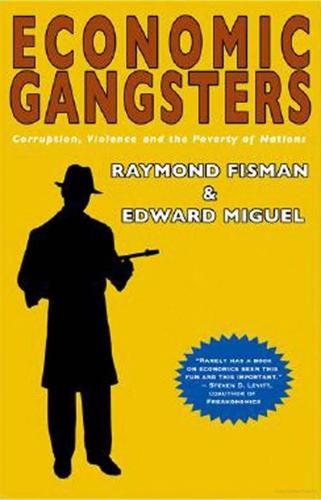
Economic Gangsters: Corruption, Violence, and the Poverty of Nations
by
Raymond Fisman
and
Edward Miguel
Published 14 Apr 2008
But given that the fruits of so much foreign assistance are currently destroyed by armed conflict, RCPS can be seen as a natural complement to these investmentbased forms of assistance. Once we recognize that a central element of Africa’s economic mess stems from armed conflict and other forms of violence, we should further target RCPS toward those most willing and able to participate in armed violence, to keep them out of trouble. Unemployed and poor young men have traditionally filled the ranks of criminal gangs (like Mungiki 151 CH A PTER SI X in Kenya) and armed rebel groups (as in Niger). Temporary public works job creation for the young and disaffected might cause them to think differently about the cost-benefit tradeoff of taking up arms in countries threatened with crisis.

Fortune's Bazaar: the Making of Hong Kong: The Making of Hong Kong
by
Vaudine England
Published 16 May 2023
Soon, these foreign private traders joined the region’s long-established so-called country trade in goods across and within Asia. Between Britain’s occupations of the Malaysian island city of Penang in 1786 and Singapore in 1819, it also won the Napoleonic Wars. Victory not only secured Britain’s position as the world’s foremost naval and economic power; it also produced a lot of newly unemployed, adventurous young men, ready to explore the seven seas. The British enjoyed rich Asian experience through their brief tutelages of Manila (1762–64), Malacca and Padang (1765), Maluku (1796 and 1810), and Java (1811–16). They brought new ideas about “free trade” with them. The Portuguese, Dutch, and Spanish had each tried to gain sole control of a key commodity and enforce a monopoly, violently punishing any transgressors.
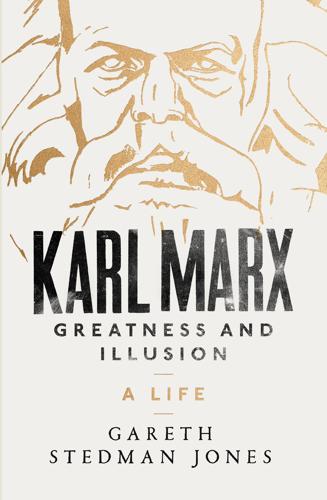
Karl Marx: Greatness and Illusion
by
Gareth Stedman Jones
Published 24 Aug 2016
Karl’s future brother-in-law and ‘aristocrat comme il faut’, Ferdinand von Westphalen, told Karl that such a course of action would make people in Berlin ‘particularly vexed’.61 Before they parted company, Bauer and Karl ‘rented a pair of asses’ to ride through the city. ‘Bonn society was astonished. We shouted with joy, the asses brayed.’62 4. THE RHEINISCHE ZEITUNG With the definitive dismissal of Bruno Bauer, Karl lost all hope of academic employment. Like a growing number of educated but unemployed young men in Vormärz Germany, however, he had an alternative: he could turn to journalism. Despite censorship, this was an occupation in which opportunities for employment were increasing; and for Karl himself a particular opportunity had opened up in the Rhineland, the prospect of writing for a new liberal newspaper, the Rheinische Zeitung, which was to begin publication early in 1842.

The Quest: Energy, Security, and the Remaking of the Modern World
by
Daniel Yergin
Published 14 May 2011
By the autumn of 2003, a new, more difficult phase was beginning. In due course, some would call it a civil war; others, an insurgency. As events played out, it would be both—a civil war between Shia and Sunnis, and an insurgency manned by Baathists and other Sunni activists, increasingly conjoined with foreign jihadists, abetted by unemployed young men (who, for a hundred dollars or even fifty dollars, could be hired to open fire on the Americans).18 By the spring of 2004 it would become a war against the occupation. Private militias were battling each other. Foreign jihadists were infiltrating into the country. Killings and revenge killings became a daily occurrence.
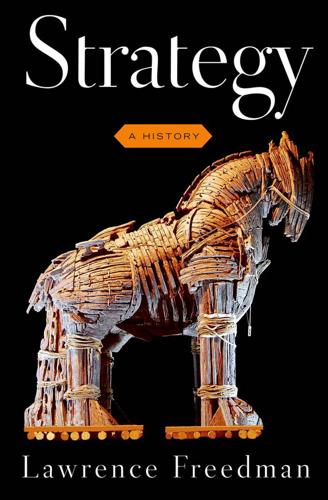
Strategy: A History
by
Lawrence Freedman
Published 31 Oct 2013
Out of the minority Sunni community, which had provided the key figures in the old elite, came the hardest resistance. The Sunnis gained support from those humiliated by Iraq’s occupation and fearful of the loss of their power. Their numbers swelled with disbanded military members and volunteers from the many unemployed young men. It included “former regime elements” and a strong al-Qaeda group led by the Jordanian Abu Musab al-Zarqawi, who was as keen to foment civil war with the majority Shiites as he was to expel the Americans. Although Shiites were the natural beneficiaries of the toppling of the Iraqi regime, radical elements from within this community, led by Muqtada al-Sadr, also turned on the Americans.
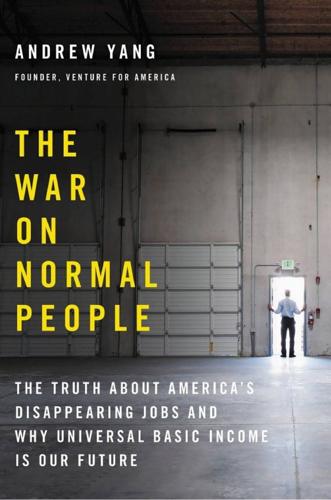
The War on Normal People: The Truth About America's Disappearing Jobs and Why Universal Basic Income Is Our Future
by
Andrew Yang
Published 2 Apr 2018
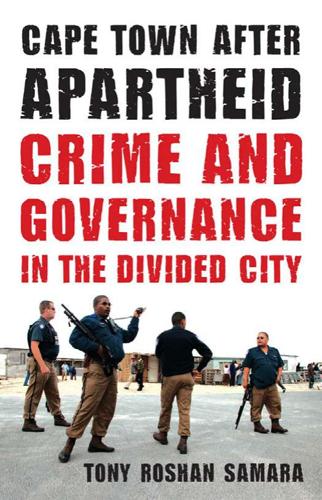
Cape Town After Apartheid: Crime and Governance in the Divided City
by
Tony Roshan Samara
Published 12 Jun 2011
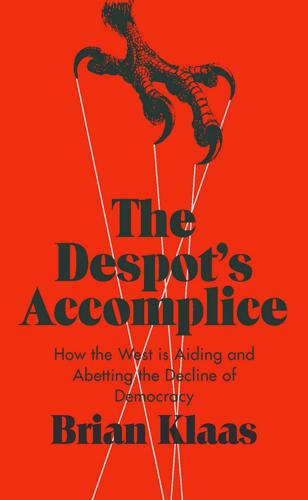
The Despot's Accomplice: How the West Is Aiding and Abetting the Decline of Democracy
by
Brian Klaas
Published 15 Mar 2017
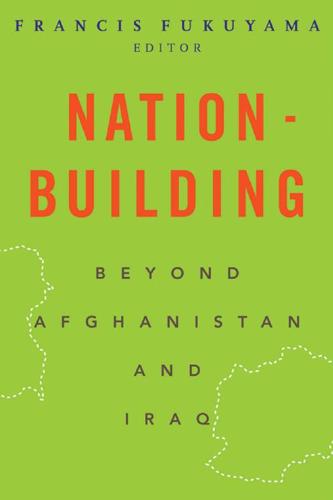
Nation-Building: Beyond Afghanistan and Iraq
by
Francis Fukuyama
Published 22 Dec 2005
Setbacks in the occupation of Iraq derived as much from faulty execution of policy as from poor planning or flawed strategy. An early decision to demobilize the Iraqi Army was taken without first implementing any program for the disarmament, demobilization, and reintegration of its members, thereby complicating efforts to rebuild an Iraqi military and creating a large pool of armed, unemployed, and disgruntled young men. A sweeping de-Ba’athification decree was issued without putting in place a mechanism to review and adjudicate cases of individuals not personally guilty of serious crimes or human rights abuses. Six months went by before money for reconstruction was requested of the Congress, during which critical programs to equip and train new Iraqi security forces languished for lack of direction and funding.
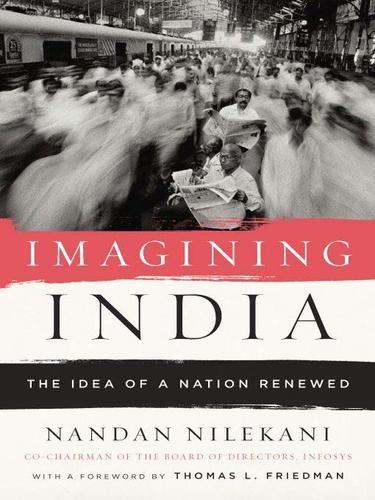
Imagining India
by
Nandan Nilekani
Published 25 Nov 2008
Through the 1960s and 1970s, unemployment served as the main trigger for Indian militancy movements—the Naxalites attracted support and fighters with the rallying cry of “land and jobs,” unemployed men were fodder for the recruiters of the Shiv Sena, and the All Assam Students’ Union targeted its violence at migrants coming to the state to “steal our jobs.” Throughout these years, masses of unemployed, desperate young men mounted frequent riots against governments both ineffectual and too broke to create investment or jobs. The numerous labor protests and the massive railway strike in 1974 also led Indira Gandhi to announce the Emergency. She had been watching these strikes with growing irritation, and the first thing she did with her newfound power was throw labor leaders into jail.1 In those years, as India’s economy tottered and unemployment grew, the government automatically responded by tightening labor laws and promising to expand government employment.
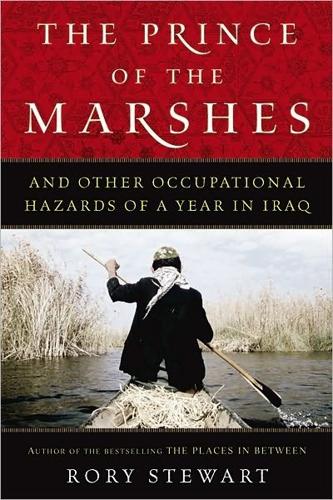
The Prince of the Marshes: And Other Occupational Hazards of a Year in Iraq
by
Rory Stewart
Published 1 Jan 2005
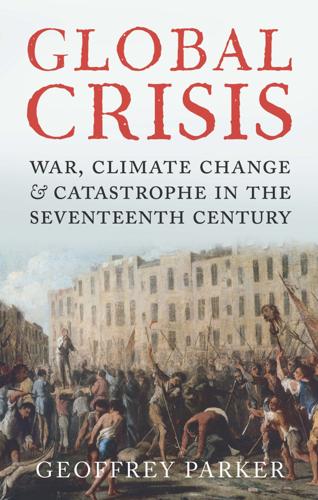
Global Crisis: War, Climate Change and Catastrophe in the Seventeenth Century
by
Geoffrey Parker
Published 29 Apr 2013
Not all MPs accepted this – ‘I did not dream that we should remonstrate downward, tell stories to the people, and talk of the king as of a third person’, as one MP put it – and after 14 hours of bitter debate, it passed the Commons by only 159 votes to 148. Nevertheless, Pym made sure that copies were available for purchase the following day, 24 November 1641. On the 25th Charles entered London, escorted by over 1,000 soldiers from the recently disbanded northern army.85 For the next six weeks ‘popular tumults’ rocked the capital. Gangs of unemployed young men roamed the streets of London shouting ‘Down with the bishops, hang up the popish lords’. The king responded provocatively: he ordered the Lord Mayor to ‘kill and slay such of them as shall persist in their tumultuous and seditious ways and disorders'; he commanded his courtiers to start wearing swords; and he built a barracks just outside Whitehall Palace to accommodate the soldiers he had brought with him from Yorkshire.
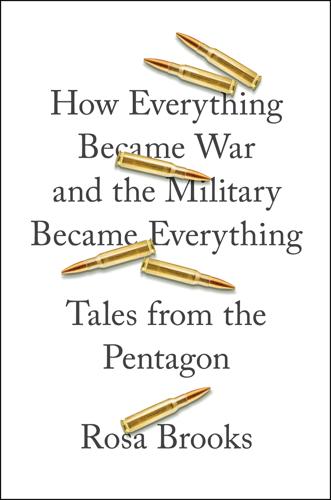
How Everything Became War and the Military Became Everything: Tales From the Pentagon
by
Rosa Brooks
Published 8 Aug 2016
We couldn’t bring ourselves to believe gloomy predictions that looting might take place, and we convinced ourselves the Iraqis would be better off if we could just oust senior members of Saddam Hussein’s Baathist party from the government and disband his army.34 But instead of bringing peace and democracy, early U.S. decisions in Iraq led to chaos, revenge killings, a government that could no longer provide the most basic services, and millions of angry, unemployed—and armed—young men. It only got worse. The continued American presence sparked an insurgency and brought al Qaeda to Iraq.35 While the Iraq War’s civilian death toll remains disputed, it was certainly stunningly high.36 Violence began gradually to subside after 2006, for reasons that probably had more to do with the internal changes in Iraq’s Sunni community known as the Sunni Awakening than with the U.S. troop surge, and in 2011 we finally slunk off, tails between our legs.
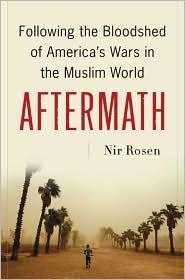
Aftermath: Following the Bloodshed of America's Wars in the Muslim World
by
Nir Rosen
Published 21 Apr 2011
The U.S. encouraged and helped Iraq go to war against Iran in 1980. It was a war that devastated both countries. The U.S. and its Gulf allies also helped support Iraq’s massive army, which encouraged the adventure in Kuwait and which later, after the Americans disbanded this vast army, led to such a large group of unemployed armed young men in 2003. The American project in Iraq resembled and was sometimes even consciously modeled after other colonial endeavors in the region. The act of occupying a country, dismantling and rebuilding its institutions, economic structures, and even its political identity, is not a new feature in the modern history of the Middle East.
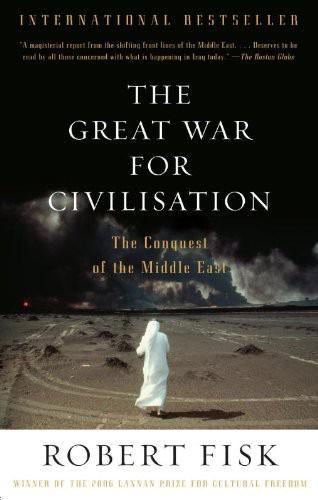
The Great War for Civilisation: The Conquest of the Middle East
by
Robert Fisk
Published 2 Jan 2005
On 28 July, for example, hordes of impoverished would-be police recruits were massacred, up to a hundred of them in the Sunni city of Baquba, as they lined up unprotected along a boulevard in the hope of finding work. The bomber—identity, as usual, unknown—drove his Renault car into a mass of 600 unemployed young men looking for jobs in the police force, detonated his explosives and cut them to pieces. The bomb left a 7-foot hole in the road and wounded at least another 150 men and women, many of them shopping in a neighbouring market. It would be the last summer when it was still possible to move on the roads of Iraq with some hope of not being killed or kidnapped and decapitated.
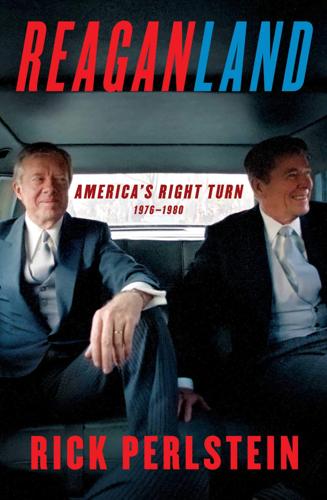
Reaganland: America's Right Turn 1976-1980
by
Rick Perlstein
Published 17 Aug 2020
It derived not merely from the ulama but from another, more ironic source. Tens of thousands of the kingdom’s best and brightest had been sent abroad to train in foreign universities. At home, the number of students doubled. College graduates multiplied faster than even the most dynamic economy could provide for—and unemployed, educated young men had always made for history’s most fertile recruiting soil for revolutionaries, most especially in authoritarian countries where outlets for legitimate political expression were few. The dynamic intensifies when a traditional society sends its children abroad. In cities like Paris and New York, Ann Arbor and Austin, the lonely, alienated children of a secularizing middle class found in the religious traditions of their homeland a psychic balm.
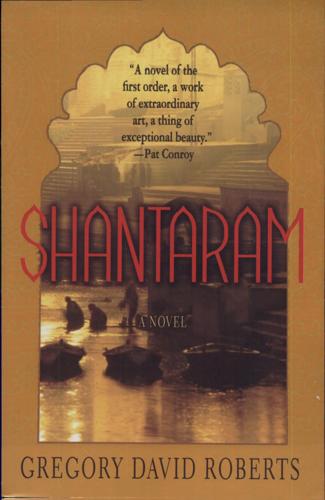
Shantaram: A Novel
by
Gregory David Roberts
Published 12 Oct 2004
Any man who could prove he had a job, however menial, by displaying the business card or written address of his employer, was spared. Single men who were clean and respectful and could demonstrate some level of education could usually talk their way out of an arrest, even if they weren’t employed anywhere. And, of course, anyone who could pay baksheesh was safe. That left the very poor, homeless, unemployed, uneducated, single young men as the high-risk group in the midnight round-up. With no money to pay their way out of the police net, and not enough education to talk their way out, scores of those young men were arrested throughout the city, every night. Some of them were arrested because they fitted descriptions of wanted men.